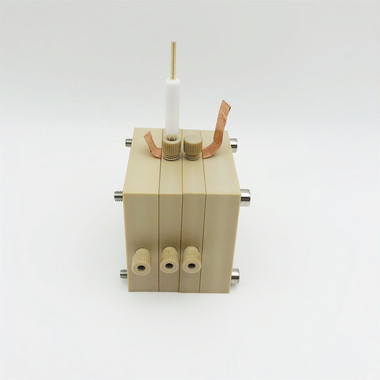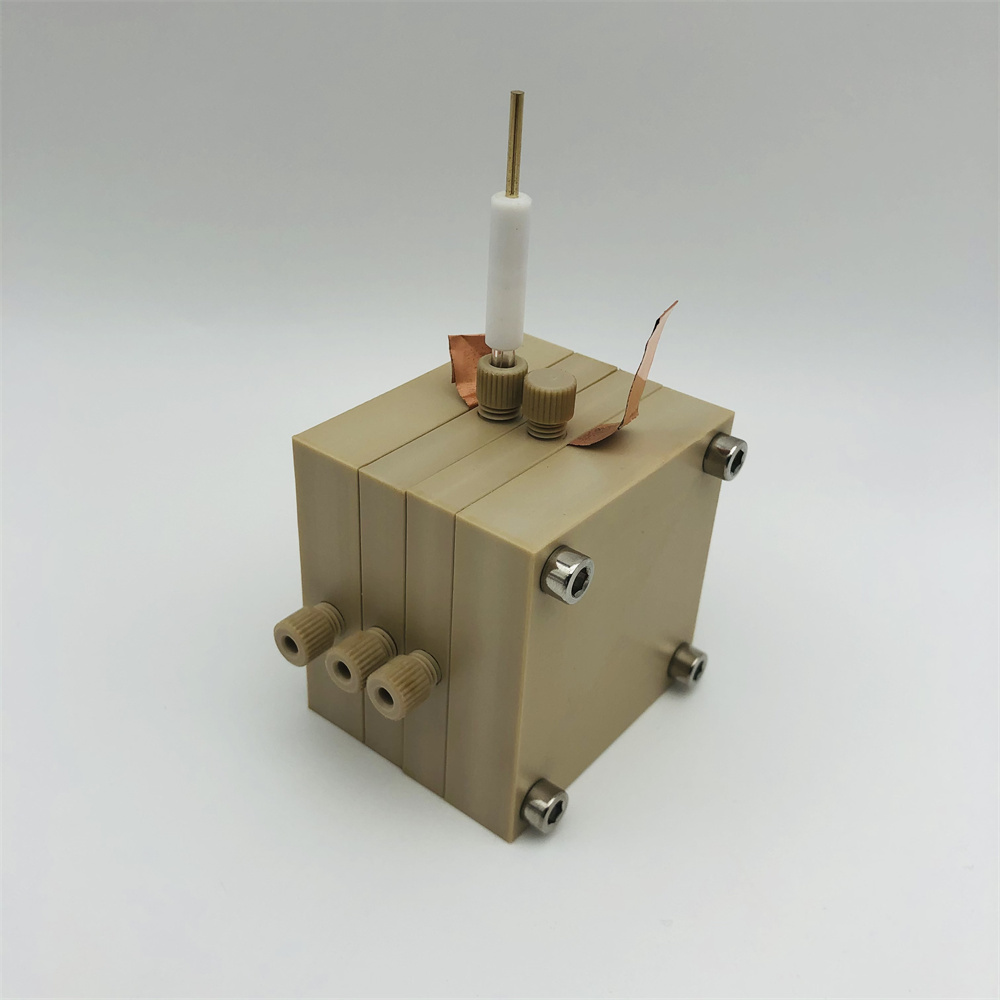The CO2RR Gas Diffusion Flow Cell (CO2RR GDFC) is a type of electrochemical cell used in the conversion of carbon dioxide (CO2) to other chemicals through a process called the CO2 reduction reaction (CO2RR). It is similar in design to the Gas Diffusion Flow Cell (GDFC) used to measure gas permeability, but it is specifically designed to facilitate the electrochemical reduction of CO2.
The CO2RR GDFC consists of a small, sealed chamber with two compartments separated by a thin, gas-permeable membrane. One compartment is filled with a CO2-containing gas mixture, while the other compartment contains an electrolyte solution and a catalyst material, such as copper or silver, which facilitates the CO2RR. The two compartments are separated by the gas-permeable membrane, which allows CO2 to diffuse from the high concentration compartment to the low concentration compartment.
The CO2RR is driven by an electric potential applied across the two compartments, which induces the reduction of CO2 into other chemicals, such as formic acid, methane, or ethylene. The electrochemical reaction generates a current that is measured by the GDFC, and the efficiency of the CO2RR is determined by analyzing the products of the reaction.

CO2RR GDFCs are used in research to study the electrochemical reduction of CO2 and to develop new catalyst materials that can improve the efficiency and selectivity of the reaction. They also have potential applications in the development of carbon capture and utilization technologies, where CO2 can be converted into valuable chemicals and fuels.
Check Details: >> https://www.dekresearch.com/co2rr-gas-diffusion-flow-cell-20*20mm-4c%E3%8E%A1-4004.html



Comments
Post a Comment